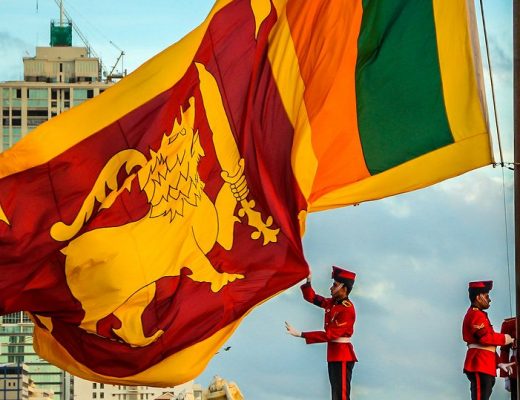During the Rohana era, one has to consider that after the invasion of Arians and from the epochs of
Anuradhapura and Polonnaruwa, the Ruhuna reign existed according to the rules and regulations of the
country. It was a self-sufficient reign managing its economic growth for a long time.
It was mentioned in the chronicles that Ruhunu people, in probability, in fear of enemy threats, were
returning to Ruhuna after establishing rural establishments with army support. Lots of jobs associated
with the forces were available in Ruhuna. Therefore, for a long time, it was clear that it was possible to
discuss the possibility of the standard economy of Ruhuna.
Ruhuna has existed from time immemorial based on the above incidents. The wife of King Panduwas,
Princess Baddyakathyana, and among her brothers, Prince Ram, named Uruweala village and Anuradha,
Vigitha others used towns in their names. Prince Deergayu called the village Deergayu, and Prince
Rohana established the Rohana under his name.
After a long time, Ruhuna became a reign of Sinhala Kings. Afterwards, Ruhuna became a different king,
a ‘yet-to-be king’ (Uvya Raja). It was the beginning of Rohana Reign. During the Anuradhapura era,
kings were named Uvya Rajas and were called Adi Pada. Later Ruhunu reign protected Sinhala kings and
became a kingdom that could become reasonable. If a king was crowned in Ruhuna, kings in the regions
were known as separate entities (mentioned in the chronicles). During King Sena’s period, after the death
of Prince Weera Mahinda, according to the customs, the crown would have gone to Kassapa the Adi
Pada. Still, King Sena appointed his younger brother to charge of the southern region as Yvua Raja. (It
was mentioned in the chronicles), and described how income for Ruhuna was generated from the other
areas -possibly from various taxes.
There was a political incident during King Seelaka. A person named Mahanaga, a resident of Ruhuna
became the King of Anuradhapura after working under King Seelakala as a cashier. Seelaka worked as a
cashier, and his income was generated being investigated at the time. Having worked under King
Seelakala as a cashier, he (Mahanaga) worked against and rebelled against King Seelakala and became
the sole ruler in Ruhuna.
When Anuradhapura surrendered to the enemies, King Wijayabahu managed to expel them by
sending—many people, to Prince Wijabahu, with complaints and loads of money. Generally, many kings
worked for the welfare of their subjects.
King Kavantissa of Ruhuna made plans for Elara, who ruled Anuradhapura at the time to defeat him
(Elara). Still, he intended to protect the country from the enemy by all means. The King employed war
tactics employed the military so that no harm was done to his subjects but to protect them peacefully.
King Kavantissa could have killed Elara, but his idea was to protect the nation and not kill the Tamil
King. The King fortified through military strength, and he ensured that there was no injustice or fear of
war to his subjects but created a peaceful environment. The King approached King Elara with the army
and threatened to kill him, but he did not end up killing King Elara. History recorded how the King
evaded the fear of war by any means towards his sons and the nation’s citizens.
It was established that people’s daily lives were centred on agriculture and other products, and the citizens
were not self-sufficient. According to history, the population was high, and the production was inadequate
to feed all mouths.
PEOPLE, THEIR VOCATION, AND THE SOCIAL STANDARDS.
Ancient history indicated that although there was plenty of rainfall, the food production in each district
needed to be improved to feed all mouths in Ruhuna. Although there was evidence to show that during
the Anuradhapura era, Ruhuna was divided into many communities in the 12th century, and the south of
Ruhuna was split into West and South named Tholos das Rata, and the East was named Atadahas Rata.
When Prince Mahanaga became King of Anuradhapura, he merged Ruhuna and Anuradhapura.
However, the administration was unsuccessful because of the distance and borders marked between the
two areas, according to history. Lords (Adi Pada) Dappula managed to form an agreement, and Mahinda
prepared an agreement to stop the war. They changed the borders of the two areas, towards south Galga
Ganga (Gal Oya) and separated to areas where the north of Gal Oya and Digamulla belonged to
Anuradhapura.
During the Elara – Dutugamunu war, the famous elephant Kadol was sent for treatment, indicating that
veterinary surgery treated the elephants, horses and other animals, and such medical services were
available during the Ruhunu era. Afterwards, conflict situations were for a few hundred years. It was also
noted that cashers posts and building trade vacancies were mentioned in Mahavamsa. It became a part of
Anuradhapura.
During the Rohana era, there were main roads; once was Bibile (across the Mahaweli river, the Pulasathi
town, and Dass Thota). When transporting goods from one area to another, one had to pay taxes to
ferries. The 5 th King Mahinda came on horseback incognito and complained to the King of Solei reign
about how Soli soldiers were ruining the economy of Ceylon and managed to reconstruct the export of
various export items such as textiles, cotton, sandalwood, etc., and once again managed to expand the
export trade.
tilakfernando@gmail.com
Courtesy: The writer translated into English from Sinhala, the text of the late Prasad Milinda
Siriwardena – Ceylon Economic Analysis between BC 543 to 1832. Only the relevant parts were
translated.
By Dr. Tilak S. Fernando






